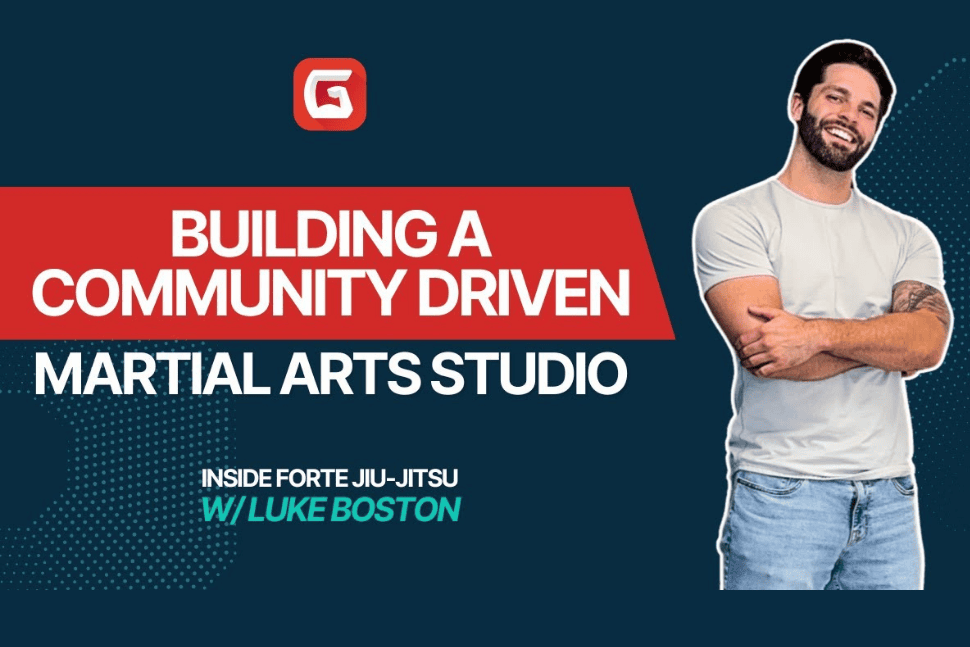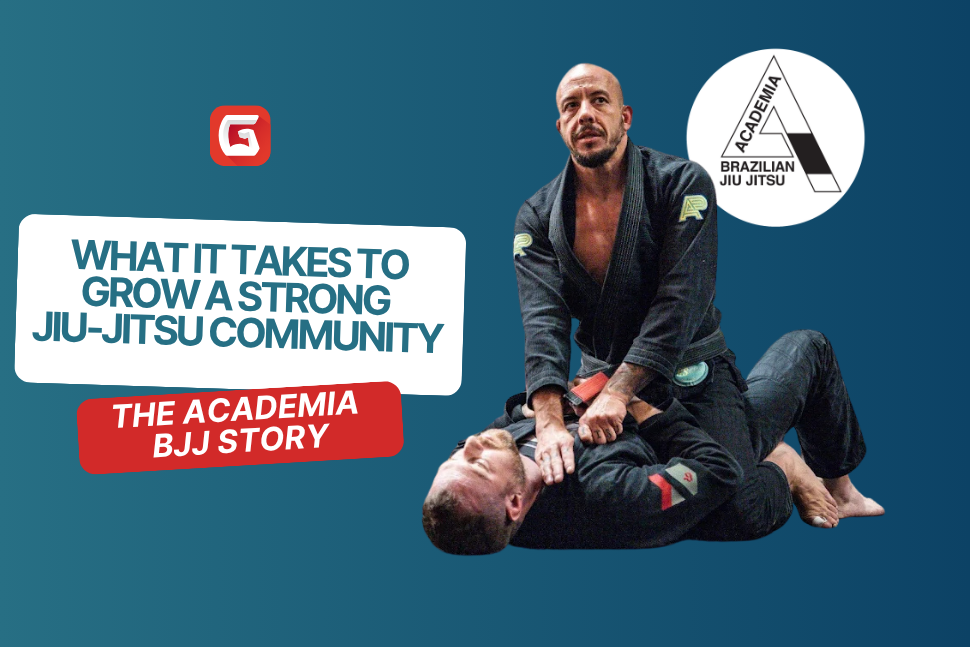Luke Boston’s journey into martial arts didn’t start with childhood trophies or golden belts. “My whole professional life has been in marketing, working at agency and working in, like, marketing science and data analytics, really. And so I’ve been a corporate guy my whole life,” he shares with a laugh.
But life threw him into new waters during a challenging period: “About seven years ago, I was going through a divorce. I lived in Boston, and I found jiu jitsu. Had no idea what it was. Joe Rogan podcast. Why not? I tried it out, fell in love with it, was terrible at it.” A self-proclaimed powerlifter, Luke admits, “I didn’t know anything. I just muscled through everything.”
Like so many, he had stumbled into jiu jitsu for the first time as an adult, experiencing the heady mix of physical humility and instant intrigue that comes with starting something genuinely difficult.
Two Lineages, One Community
A move to Phoenix, Arizona in 2020 planted the seed for something more. “I found this place called Black Flag. It’s no longer around. It’s in Glendale, probably about 15 minutes away,” Luke recalls. But this wasn’t your standard BJJ gym: its “background was in jiu jitsu, but also catch wrestling…they called it hybrid grappling.”
Luke trained relentlessly. “I was on the mats twice a day, every single day, around my work, around my job, my family, everything.” His devotion paid off with a black belt in jiu jitsu and certification as a scientific wrestler in catch wrestling. “So I basically have two lineages now. I have a catch wrestling lineage and a jiu jitsu lineage.”
He soaked up both the “gentle art” and the “brutal art” systems, explaining, “jiu jitsu is you are moving around the opponent, and then catch wrestling is you are forcing them to do what you want to do…There’s a lot of pain, a lot of rubbing induced pain, things like that, to make them do what you want them to do.”
The Leap of Faith: Starting Forte Jiu Jitsu
Two months after earning his black belt, an idea took root. “I decided to open this place up,” Luke says. The origins were humble—even precarious. “I found a Taekwondo school called True Taekwondo in downtown Phoenix. And I started. It was 500 bucks a month. I had a month to raise 500 bucks that wasn’t from my job. So I started doing my online marketing stuff like that and got 25 people to come day one that I didn’t know.”
He laughs, “We got 25 people to come, went through a very basic class, and at the end I gave my sales pitch and we got 10 to sign up. So they’re locked in at $100 a month forever—founders.” With $1,000 in the bank, Forte Jiu Jitsu was born.
Growth in those early days was organic and closely knit: “We still have 18 of our 20 founding members that are with us to this day. So it’s been an incredible ride. Very checkered and we’ve met some incredible people along the way.”
Fostering a Unique Studio Culture
What makes Forte different is the deliberate stance on community. Luke noticed, “Either [gym cultures] are very competition oriented and they care about how well they do in competition, and they just go all in on that. And then there are places that are more family oriented.” His approach: “Why not? Why can’t we have both?”
At Forte, “people who are brand new, who have come here who never competed and never want to compete, they’re here for a day, a week, but they come here for the fitness aspect and to be around community, that that’s as important to us as people who every month we’re competing and we’re out there winning medals and, and going as hard as we can.”
Inclusivity is at the heart: “We always have women on the mat…up until three months ago and I checked, we were almost half women.” He also actively lowers barriers: “We give you 60 bucks off of your first month and send you a link to a GI that if you want to buy, you don’t have to. It’s not even ours, it’s just from Amazon. Send you a link to a GI that we love and you can pick your color and it’s 50 bucks.”
And that intangible “vibe” is intentional. Alex notes, “there’s something really special about this place. You could just feel the energy, like a camaraderie and just felt very family, but fun. Yeah, like a really good combination where, like, oh, I just, I want to come back.”
Learning Business—the Hard Way
No transformation is without struggle. Luke’s biggest challenge was, unexpectedly, the flooring: “The biggest expense I’ve had is our mats. I wanted competition mats. I got Fuji mats, and they’re based out of New Jersey. So the shipping on those alone and is enough to fill out this entire space, which is why our mats aren’t as big as we want them to be.”
He’s also learned that retention outstrips recruitment. “Keeping somebody here and extending that, I guess, lifetime value would be what it is…is the most important thing you could possibly do. Having somebody come and then next month not want to come back is a lot different than somebody coming and the next month they have to quit because they’re going away.”
The true work is building community, minimizing friction, and meeting everybody where they are.
Managing Growth With Purpose
With membership climbing and responsibilities compounding, Luke needed organization. In the early days, “I was doing everything out of a notebook for my first 20 members…and then…I needed to get…something that I can log people in and…have everything, because we had paper waivers, of course…if I can’t be here every day, like, I get to go on vacation and have people run this for me…I gotta know who’s coming in. You know, we gotta make sure we keep track of all that.”
He considered Gymdesk for its martial artist founder, “the person who built this does Jiu Jitsu. I’m like, okay, that’s a good start,” and loved the “tiering for the payments, they are…perfect for me. They…it grows with you.”
Most importantly, customer service made an impression: “I had to refund somebody. And I was afraid that if I press the button, I was going to charge them again….I got email, emailed them. They emailed back 20 minutes later, had the solution. Beautiful. So that’s what’s really important to me…customer service. Because in the same way, I want to make sure that it’s all seamless here as well.”
He concludes, “The more stuff I get integrated, I’m like, I don’t think I want to leave. I think this is probably it. So, yeah, here I am.”
Looking Ahead: A Vision for the Future
Forte is more than a name—it’s a philosophy. “Forte…means strong strength in Italian, and that’s part of my heritage…The only way you’re going to get better is going through the fire. So forte is…It’s more of a lifestyle more than anything else.”
Luke dreams big, too: “So I want, it’s going to go from Forte Jiu Jitsu to Forte Fight Club…I want it to be this, just this big facility that you can go in. If you go to the gym, you go to the gym. If you go to the mats, you go to the mats. There’s a boxing class, there’s judo.”
But through all of it, he’s guided by one principle: “I want to be something that’s useful, that people look forward to going to. That’s like changing the way that martial arts is, you know, of the ego in jiu jitsu. None of the ego in any of this stuff. They go there and they’re getting what they’re getting in there, just in a bigger, more state of the art space.”
What started as a leap of faith, built on community and grit, continues to grow into a legacy—a testament to the power of building something that welcomes everyone, celebrates challenge, and stays rooted in its values.
 Gym Owner Statistics: The State of Gyms, Member Trends, and Usage Data
Gym Owner Statistics: The State of Gyms, Member Trends, and Usage Data




 EN (English)
EN (English)
 JA (日本語)
JA (日本語)